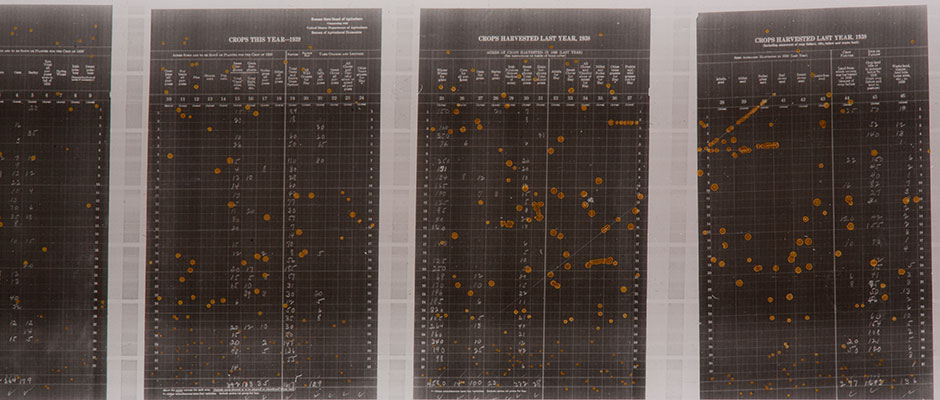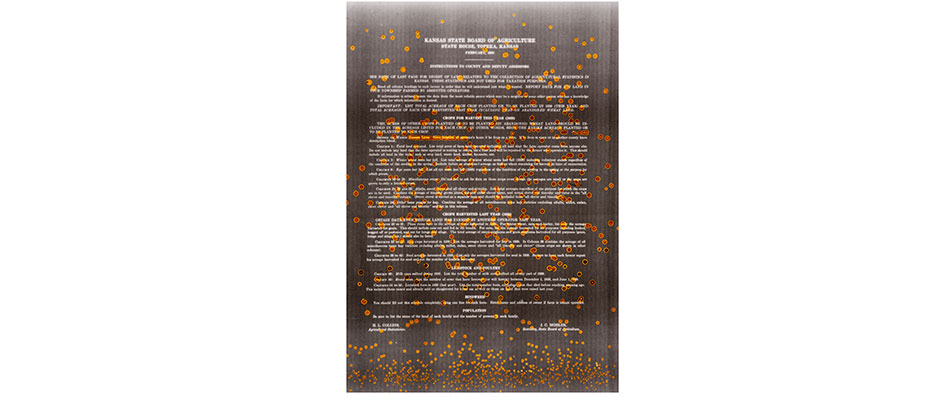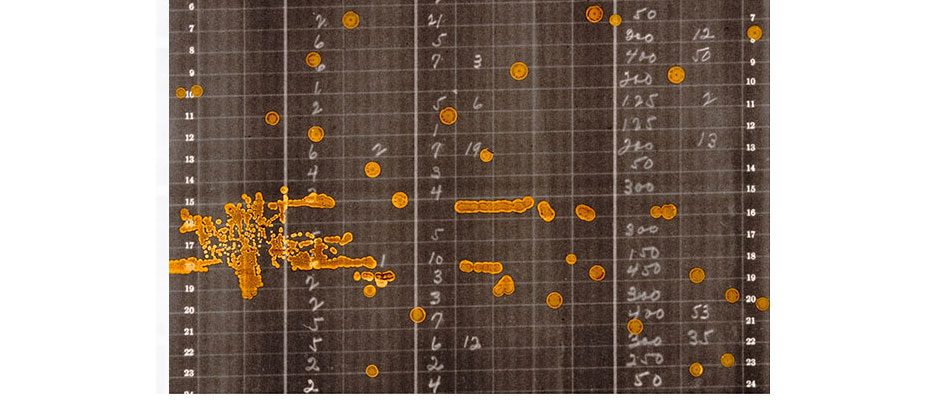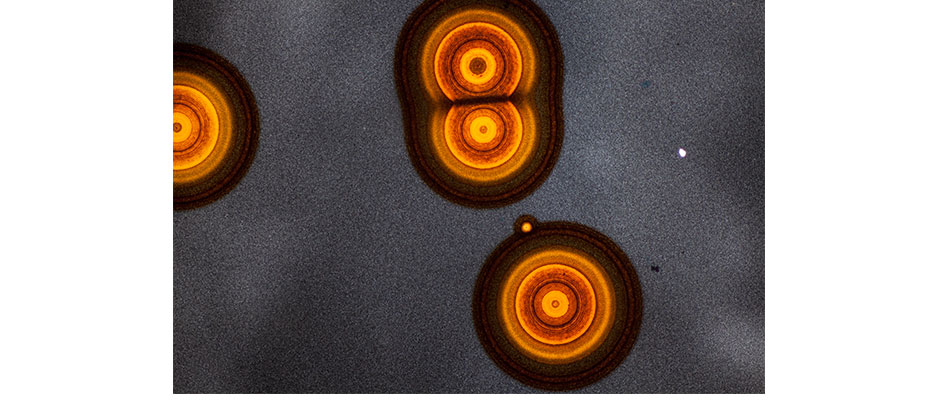


Red spots, or redox blemishes, have affected this roll of 16mm acetate microfilm. Redox blemishes are small, localized zones of silver corrosion, that, despite their size, cause irrevocable loss of information in microfilm images. Inert enclosures are necessary to prevent redox blemishes.

This microfilm image demonstrates generalized redox blemishes, which can result in the loss of information in microfilm records.

This image on 16mm microfilm has been affected by redox blemishes, which are particularly destructive of the image where they cluster on the left.

This detail of redox blemishes was photographed using transmitted light at 100x magnification. These redox spots affect a gelatin emulsion on a glass plate negative, demonstrating that corrosion can affect image silver on any type of support.

Reference frames of 35mm from Tinting and Toning of Eastman Positive Motion Picture Film (Eastman Kodak, 1918) demonstrate that all the toning samples on the right hand side display the effects of silver oxidation except for two samples. These samples were toned with sulfide or iron compounds which are known to convert part of the image silver to silver sulfide or Prussian blue pigment, more stable compounds that resist oxidative attack.
What it is and what causes itRedox blemishes appear as small pink, orange, or yellow spots in the image area when viewed in transmitted light. When viewed in reflected light, they can appear brown or other colors. Redox spots are normally circular in shape. A product of corrosion, redox blemishes are frequently seen in microfilm.Redox blemishes are manifestations of local oxidation of metallic silver. Images on black and white film are typically formed by metallic silver in a gelatin binder. When exposed to a combination of moisture in the environment and pollutants in the air or contaminants in the film’s enclosure, this image silver will corrode. Image-forming metallic silver exists in a filamentary structure. When corrosion occurs, oxidative gases permeate the gelatin and attack small sites of silver, severing them from the filamentary structure and converting them into silver ions. The silver ions migrate through the gelatin and reduce as very small particles of colloidal silver, redepositing in new locations. Colloidal silver has a red/brown or yellow appearance, seen in the familiar color of redox spots. |
What you can doMoisture in the air is the critical factor that causes oxidation of the silver image, so prevention of corrosion requires an environment with controlled relative humidity, preferably between 20-50%. Storage of film in an environment free of pollutants and in inert enclosures is recommended for prevention of silver oxidation. Suitable enclosures for storing photographic materials should pass the Photographic Activity Test (PAT). A low temperature environment is preferable, but is not as important in the prevention of oxidation as is the control of relative humidity and the reduction of contaminants in the film’s enclosure.Microfilm can be protected from redox blemishes with polysulfide treatment. Polysulfide treatment involves washing the film in a polysulfide solution that converts a proportion of the image silver in the film to silver sulfide, a more stable compound that resists oxidative attack. The ideal conversion percentage is approximately 65%, insuring the stability of the image while also not significantly altering the density of the image. Kodak Brown Toner is an appropriate polysulfide treatment. |
At Risk
|